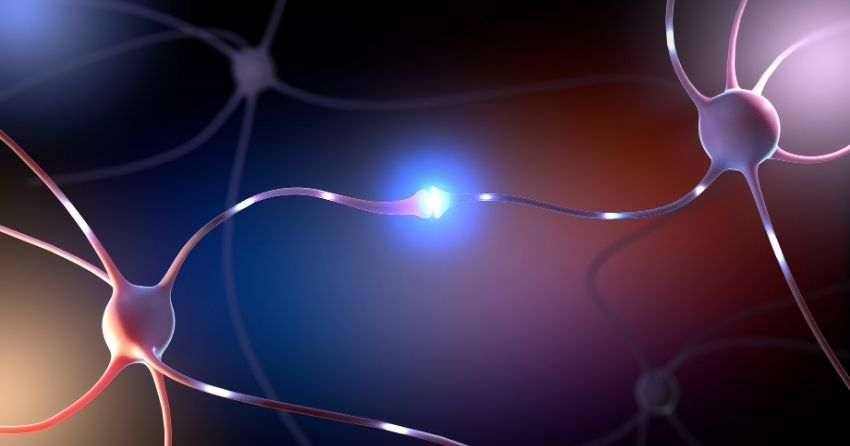Scientists Discover Protein That Repairs Damaged Synapses in Brain

-
Researchers uncover a way to reverse damage caused by neurodegeneration that lead to memory loss, using a protein called KIBRA.
-
KIBRA is primarily localized at synapses in the brain, which are the connections between neurons that allow memories to be formed and recalled.
-
KIBRA is required for synapses to form memories, and this research team found that neurdegenerative brains with are deficient in KIBRA.
-
In mice with memory loss, KIBRA reversed the memory impairment associated with this type of neurodegeneration and restored synaptic function.
This article was posted on ScienceDaily.com: [may be edited for content or length]
While newly approved drugs for neurodegeneration show some promise for slowing the memory-robbing disease, the current treatments fall far short of being effective at regaining memory. What is needed are more treatment options targeted to restore memory, said Buck Assistant Professor Tara Tracy, PhD, the senior author of a study that proposes an alternate strategy for reversing the memory problems that accompany neurodegeneration.
Since most current research on potential treatments for neurodegeneration focuses on reducing the toxic proteins, such as tau and amyloid beta, that accumulate in the brain as the disease progresses, the team veered away from this route to explore an alternative.
"Rather than trying to reduce toxic proteins in the brain, we are trying to reverse the damage caused by neurodegeneration to restore memory," said Tracy.
The findings appear in the February 1 issue of The Journal of Clinical Investigation.
The work hinges on a protein called KIBRA, named because it is found in the kidney and the brain.
In the brain, it is primarily localized at the synapses, which are the connections between neurons that allow memories to be formed and recalled.
Research has shown that KIBRA is required for synapses to form memories, and Tracy's team has found that brains with neurodegeneration are deficient in KIBRA.
"We wondered how the lower levels of KIBRA affected signaling at the synapse, and whether understanding that mechanism better could yield some insight into how to repair the synapses damaged during the course of neurodegeneration" said Buck Staff Scientist Grant Kauwe, PhD, co-first author of the study.
"What we identified is a mechanism that could be targeted to repair synaptic function, and we are now trying to develop a therapy based on this work."
The team first measured the levels of KIBRA in the cerebrospinal fluid of humans.
They found that higher levels of KIBRA in the cerebrospinal fluid, but lower levels in the brain, corresponded to the severity of [memory loss].
"We also found this amazing correlation between increased tau levels and increased KIBRA levels in the cerebrospinal fluid," said Tracy.
"It was very surprising how strong the relationship was, which really points to the role of KIBRA being affected by tau in the brain." The team is exploring this phenomenon further, in hopes that KIBRA could be used as a biomarker of synaptic dysfunction and cognitive decline that could be useful for diagnosis, treatment planning, and tracking disease progression and response to therapy.
To figure out how KIBRA affects synapses, the team created a shortened functional version of the KIBRA protein.
In laboratory mice that have a condition mimicking human [neurodegeneration], they found that this protein can reverse the memory impairment associated with this type of [neurodegeneration].
They found that KIBRA rescues mechanisms that promote the resilience of synapses.
"Interestingly, KIBRA restored synaptic function and memory in mice, despite not fixing the problem of toxic tau protein accumulation," said Kristeen Pareja-Navarro, co-first author of the study.
"Our work supports the possibility that KIBRA could be used as a therapy to improve memory after the onset of memory loss, even though the toxic protein that caused the damage remains."
Along with other treatments that already exist or will come in the future, a KIBRA therapy to repair synapses could be a valuable addition. "Reducing toxic proteins is of course important, but repairing synapses and improving their function is another critical factor that could help," said Tracy. "That's how I see this making the biggest impact in the future."
Story Source:
Materials provided by Buck Institute for Research on Aging. Note: Content may be edited for style and length.
Journal:
- Grant Kauwe, Kristeen A. Pareja-Navarro, Lei Yao, Jackson H. Chen, Ivy Wong, Rowan Saloner, Helen Cifuentes, Alissa L. Nana, Samah Shah, Yaqiao Li, David Le, Salvatore Spina, Lea T. Grinberg, William W. Seeley, Joel H. Kramer, Todd C. Sacktor, Birgit Schilling, Li Gan, Kaitlin B. Casaletto, and Tara E. Tracy. KIBRA repairs synaptic plasticity and promotes resilience to tauopathy-related memory loss. The Journal of Clinical Investigation, 2024 DOI: 10.1172/JCI169064







